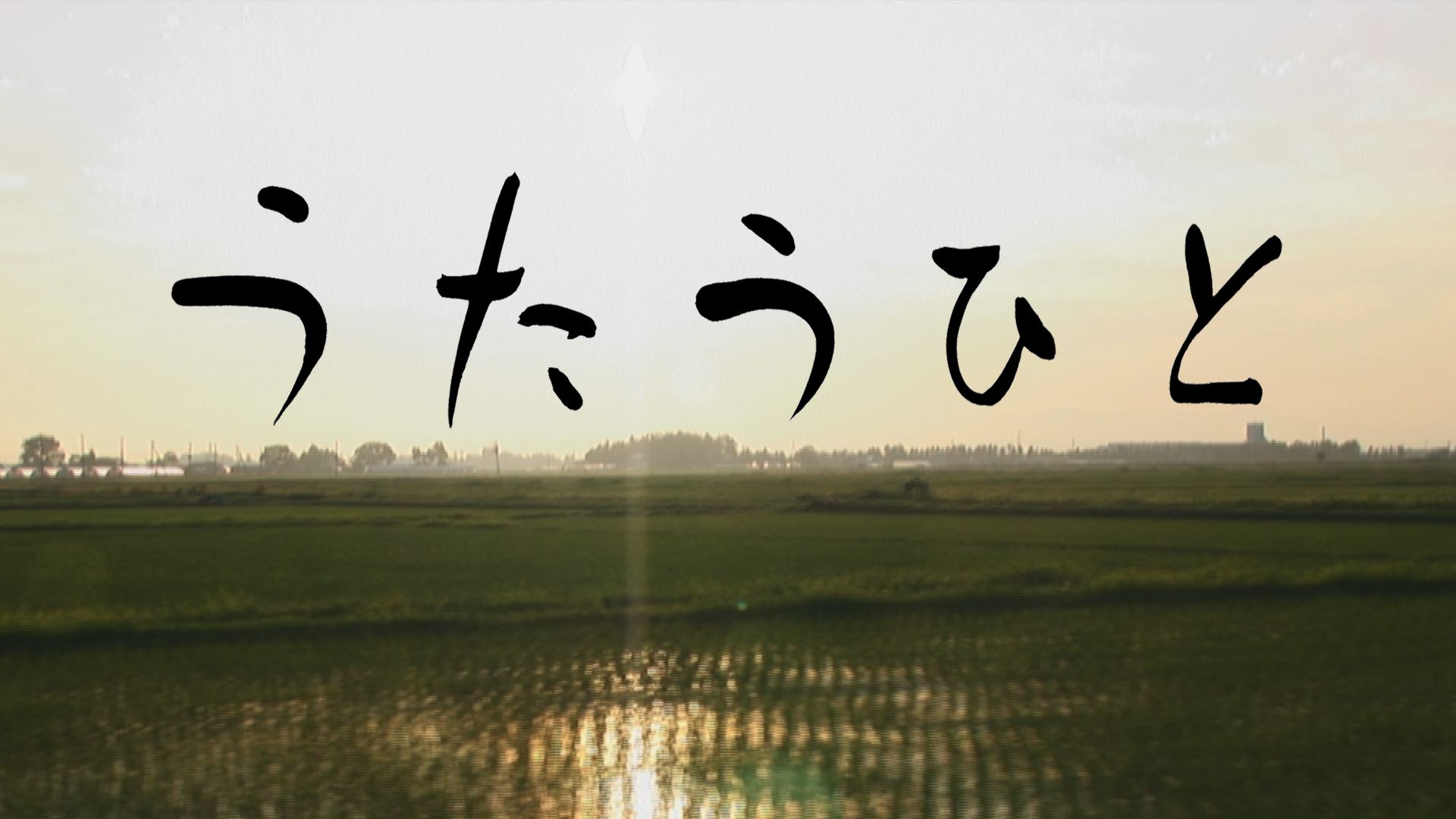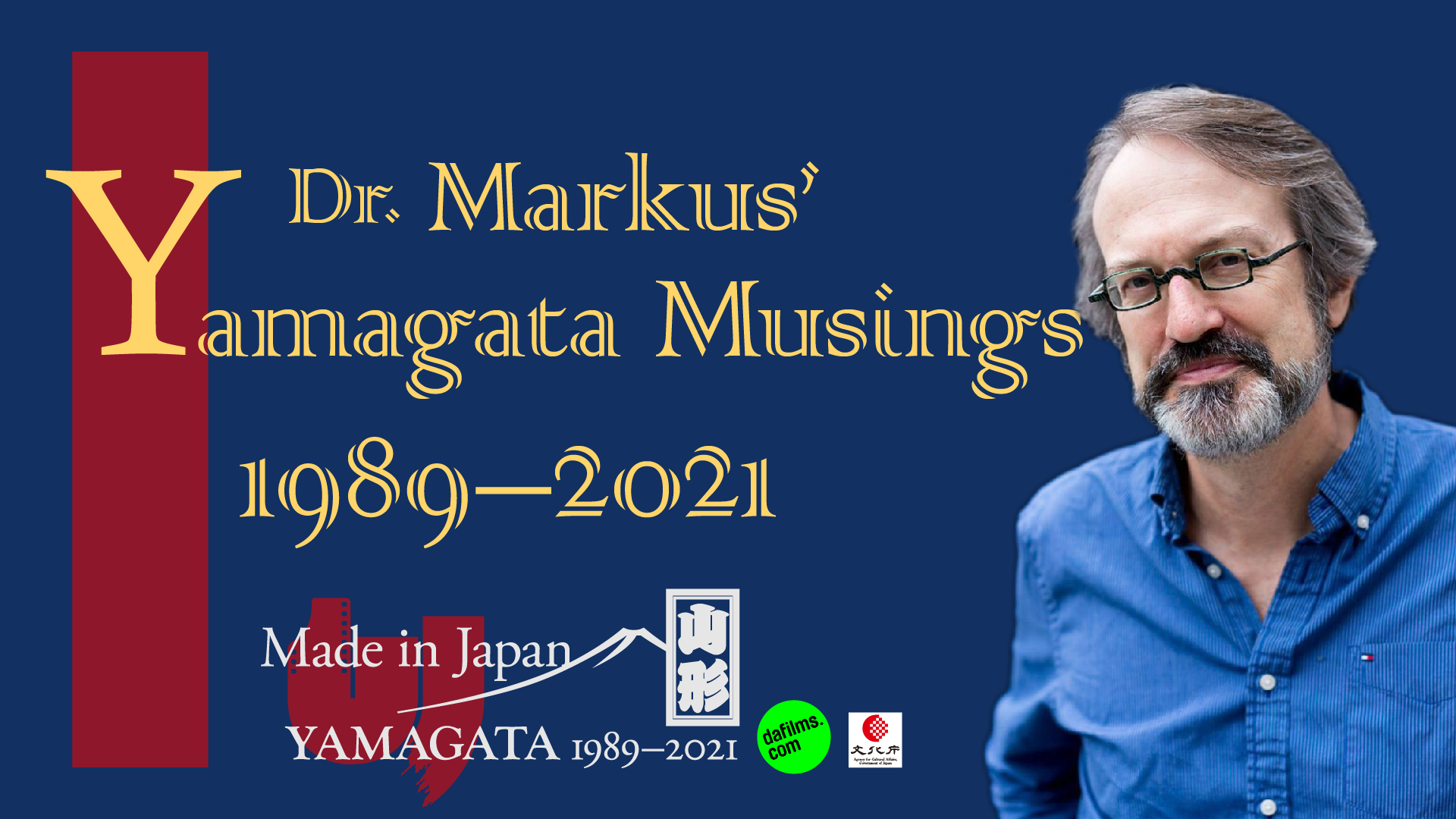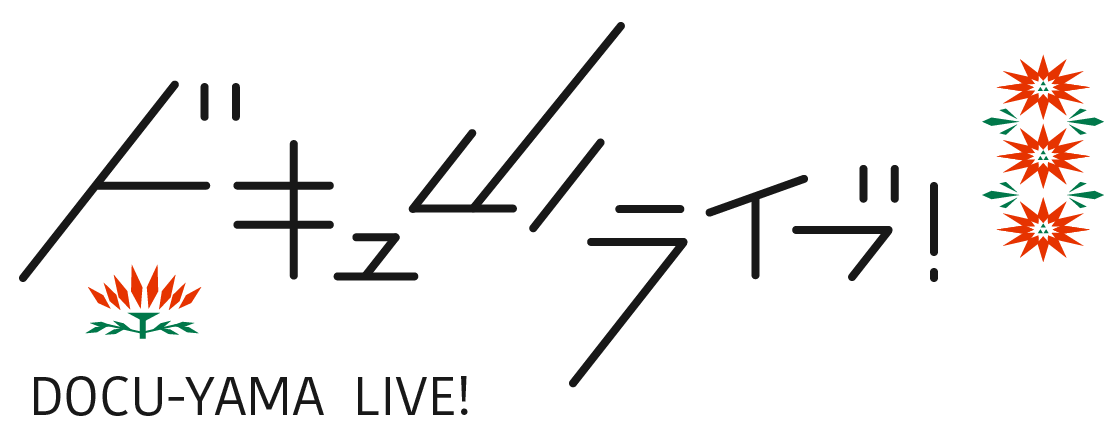Storytellers (2013) works a special kind of magic. I’ll explain the trick behind the magic below, but first a word or two about the film. It’s the third installment in what has come to be called the “Tohoku Trilogy” directed by Sakai Ko and Hamaguchi Ryusuke, Tohoku being the northern region of the main island of Japan. The first two films are The Sound of the Waves (Nami no oto, 2012) and Voices from the Waves (Nami no koe, 2013). They are three of the most interesting films made in the wake of the triple disaster of 311. Storytellers doesn’t address the earthquake and tsunami directly, but it’s all the more powerful when experienced in the context of the earlier two films centered on 311 survivors.

As it happens, Yamagata is directly to the west of the tsunami zone. A mountain chain lies between the two, but it’s only 70 miles as the radiation flew from the Fukushima plant to the theaters of Yamagata City. Aside from taking in more refugees than any other prefecture, the disaster packed a psychic hit for its citizens. The Yamagata International Documentary Film Festival takes place every other year, but the staff run screening events all year, every year. After 311, they packed up their projectors, screens and generators and drove into the disaster zone, setting up screenings of Ghibli and other entertainment films for the victims of the disaster.
And at the film festival itself, they organized a large sidebar of 311 films entitled “Cinema With Us.” The 2021 festival featured the sixth edition in this series. Over the years, Yamagata has collected every 311 documentary they could. There are now hundreds of titles among the 8,000 films in their archive. Looking over my notes, I watched roughly 300 of them for a project I never finished — because it just became too distressing. Among all these films, the Tohoku Trilogy stands out above most of the others, thanks to its indirectness, its quiet emotional power, and a unique formal device.
Hamaguchi was the first to go to Tohoku. The Sendai Mediateque had started a project to record every aspect of the triple disaster, both by collecting media produced by victims and shooting their own records and interviews. Hamaguchi heard about a call for cameramen through his old school, the Tokyo University of the Arts. He went in May and convinced his old classmate Sakai to join him that summer.
They found themselves frustrated by the set format of the interviews, which forced people into a box where all questions and answers were framed by their victimhood. The recorded conversations were inevitably stilted and overly formal. Indeed, while conventional documentary positions the interview as a fount of truth, it is actually as constructed as the most experimental of films. There is nothing natural about it. In contrast to this conventional approach, Sakai and Hamaguchi completely rethought the documentary interview in the three films of the Tohoku Trilogy.
To this end, they drew on past experience. Hamaguchi had only recently shot Intimacies (Shinmitsusa, 2012), a feature film about the mounting of a theatrical play. He tried many cinematic techniques to create a sense of intimacy, shooting actors frontally and also drawing on the conventions and techniques of documentary. He ended up feeling like it was a laboratory for learning lessons on documentary.
For their Tohoku Trilogy films, they created a strategy to capture intimacy — between pairs of people and between the pairs and the audience — that centered on direct address. In documentary, direct address involves a person looking directly at the camera, which stands in for us spectators. The camera, in effect, acts as a conduit between a person “out there” in the historical world and us. This technique is typical of broadcast television but relatively unusual in independent documentary.
As Margaret Morse has pointed out, the use of direct address in television is deeply connected to the flow of power. In television news, the anchor looks directly at the camera to authoritatively speak to the audience; when they shift to a reporter on the street it’s often done with a gesture looking or turning away. As for the reporter they may look at the camera but always speaks to the anchor in the studio; in contrast, when they interview regular people, they never look at the camera because they are at the weak end of the power spectrum across from the anchor. The only other people on television who address the camera/audience are show hosts, heads of state, and actors in commercials. It’s all about power.
Conventional documentary shares this spectrum of power. The rough equivalent of the TV anchor would be when directors overlay an all-powerful “voice-of-God” narration over the image track. When interviews take place, subjects are powerless. They cannot address us spectators directly, and are subjected to the voice-of-God/director. At the same time, the documentary does its best to disavow the control the directors impose on every aspect of the film by positioning its interview subjects as the speakers of pure truth.
In contrast, the direct address in Storytellers and their previous two films is fundamentally different. Here two people, often friends or relatives and survivors of the disaster, speak to each other in direct address. One survivor communes with another; here the camera stands in for one or the other person, while we are invited to participate from their subject positions, join the conversation as it were, and thus the communion. Sakai and Hamaguchi have crafted a gracious, respectful approach to documentary that puts its speakers at the center and generously allows them to talk at their own pace, in their own way, about what they feel is valuable and important.
The effect of this direct address between two speakers is uncanny at first and one feels like an interloper, but then it transforms into a new mode of listening in cinema. As we slowly come to watch the film on its own terms, we take the position of the listener, with the speaker addressing us. Directly. Intimately. It’s quite extraordinary. Indeed, the Tohoku Trilogy’s stunning use of the human face ranks up there with Dreyer’s Passion of Joan of Arc (La Passion de Jeanne d’Arc, 128) and Bergman’s Persona (1966).
I have more to say about this technique, but this requires explaining how they pulled it off. Usually, spoilers are about plot. The spoiler below is technical. If you haven’t seen any of the films, go and watch Storytellers on DAFilms and come back to finish this musing!
To capture intimacy in documentary, one must have intimacy in the first place. Some filmmakers like Ogawa Shinsuke spend years living with their subjects. They achieve intimacy through fraternity and friendship, in effect rubbing out the typical gulf between filmmaker and subject. This takes time, money and a certain temperament; I suspect Sakai and Hamaguchi lacked all three.
So their first choice was to have subjects talk to each other, not the directors, and hold a conversation, tell stories. They do interview the folklorist Ono Kazuko over the course of Storytellers, but those interviews take place in moving cars and a bus where everyone is facing the same direction. Many people, and perhaps most Japanese, are unaccustomed to looking interlocutors directly in the eye during conversations of any duration. The directors were highly self-conscious of this, and it led to the choices they made in not only these face-forward interviews with Ono but also the storytelling scenes at the heart of the film.
Next, while Sakai and Hamaguchi were new to these people’s lives, Ono has known the storytellers for decades. Likewise, the conversations in the first two films were usually between family members or friends. They were clearly comfortable with each other. However, they were as uncomfortable with cameras as anyone. To overcome this, they allowed the people to talk to each other without cameras present until they thought people were in the groove of things and would speak honestly. Only then did they bring out the cameras, deploying them in the conventional camera set-ups of fiction filmmaking. In two-shots, the subjects face each other, sitting in chairs in a relatively open space. As their conversation begins, we see them in the traditional shot-reverse shot figure, photographed at 45-degree angles. Suddenly, the shot-reverse shots shift to direct address and the experience of watching and listening utterly transforms.
In actuality, there has been a break. After restarting the conversation with cameras positioned at 45-degrees, they allowed their subjects to chat until they were accustomed to being shot. At some point, it would become necessary to switch tapes or take a break, and they took that opportunity to explain their new shooting method.
Chairs were moved slightly sideways. Cameras were placed next to each chair, pointed across at the other person. Now their conversation partner was seated slightly at the diagonal, and directly across from them was a camera pointed directly at them.
To make people feel slightly more comfortable, they gave each speaker a bit of white tape and asked them to draw the eye of the other person. These eyes were placed on the lens hood of the camera across from them. After this, the conversation would continue with each person speaking to their partner but looking at the camera/eye.
As an aside, I’ve heard many people invoke Ozu in explaining the Tohoku Trilogy. The comparison is interesting but all wrong. Hamaguchi and Sakai shoot their subjects straight on. Ozu had his actors face away from the camera, but twist their torsos to face the camera. David Bordwell called this “torquing.” Furthermore, their faces may be full frontal, but their eyelines never quite meet the axis of the camera lens so they are looking just off to the side, not at the audience. I once spoke to actor Okada Mariko about performing for Ozu in An Autumn Afternoon (Sanma no aji, 1959) and Late Autumn (Akibiyori, 1960). She described Ozu directing her to torque her body with minute precision. When he got what he liked, he held up a stick with a hand-drawn eye attached to the tip. Okada would look at the eye while the director waved his wand until her eyeline hit the exact direction he wanted. She would have to hold that position and deliver her lines or they’d have to start from scratch. Except for the hand-drawn eye, this has nothing to do with the technique developed by Sakai and Hamaguchi.
The two arrived at this method through some trial and error, but once they figured it out the effect was magical. They found that when speakers became accustomed to speaking to their interlocutor but looking at the camera, they could say things they might otherwise keep to themselves. Sometimes, it felt like the camera was capturing a new stage in a couple’s relationship.
When audiences get over the shock of the conversations in direct address, the films transform. One experiences a strange intimacy with the speakers, while simultaneously knowing it’s a specifically cinematic, artificial experience. The shots are very long, so one has plenty of time to gaze at the beautiful faces with their every twitch, smile and grimace. This is both storytelling and testimony, and we are inclined to accept their utterances as truth as in any documentary. At the same time, one becomes self-conscious that not everything can be said. There are other stories hidden in the ones captured by the cameras. This is particularly true of the first two films, where people reminisce about the horrors of 311. Storytellers is a fit closing to the trilogy, as it is the inverse of the first two films. The Sound of the Waves and Voices from the Waves capture true stories while Storytellers captures folk tales; but both secret dark realities deep inside their narratives. The last film invites one to wonder about the fictions of the first films, while asking what truths compel people to hand these stories down through generations. It becomes clear that the first two films are performing a new set of 311 stories that will echo through new generations.

Around the time Storytellers was released, I recall the former Yamagata International Documentary Film Festival Director, Fujioka Asako, wondering aloud how well the films would work with subtitles. I recalled this comment while re-watching the films this week. I find myself agreeing with her, and would take things a step further: Storytellers is all but untranslatable. Of course, there are English subtitles on the streamed version. But there are unfortunate, insurmountable problems. First of all, the elderly storytellers are all speaking in the dialects of Tohoku. I’m actually grateful for the subtitles, because the original language is extremely hard to follow for someone trained in the “standard” Japanese of Tokyo.
But the issue is not merely semantic. The musical cadence and sing-song melodies of the storytellers’ delivery are familiar to anyone who has spent time with old folk in the north. Unfortunately, the subtitles render meaning completely transparent and devoid of accent. What’s more, the subtitles force one to glance up and down the entire film, making it impossible to truly tune into a storyteller’s very being. That is because the musical language of the storytellers is inextricable from their beautiful faces.

Markus Nornes is Professor of Asian Cinema at the University of Michigan, where he specializes in Japanese film, documentary and translation theory. He was a programmer at YIDFF in the 1990s and beyond, and has also made films. His current book, the open access Brushed in Light, is on the intimate relationship of calligraphy and East Asian cinema.
http://www-personal.umich.edu/~nornes
Dr. Markus’ Yamagata Musings
(1) A Movie Capital Dir: Iizuka Toshio / 1991 / YIDFF ’91 Special Invitation
(2) Living on the River Agano Dir: Sato Makoto / 1992 / YIDFF ’93 Award of Excellence
(3) A Dir: Mori Tatsuya / 1998 / YIDFF ’99 World Spetial Program, A2 Dir: Mori Tatsuya / 2001 / YIDFF 2001 Special Prize, Citizens’ Prize
(4) Pickles and Komian Club Dir: Sato Koichi / 2021 / YIDFF 2021 Yamagata and Film
(5) The New God Dir: Tsuchiya Yutaka / 1999 / YIDFF ’99 New Asian Currents
![ドキュ山ライブ! [DOCU-YAMA LIVE!]](http://www.yidff-live.info/wp-content/themes/yidff-live_2017/images/header_sp_logo1.png)

